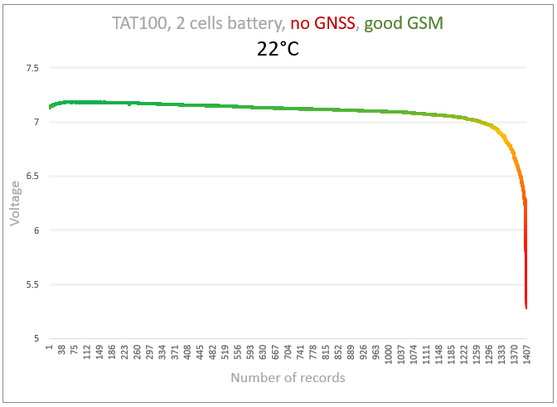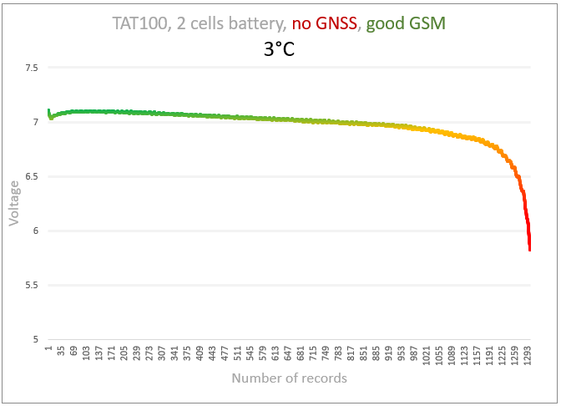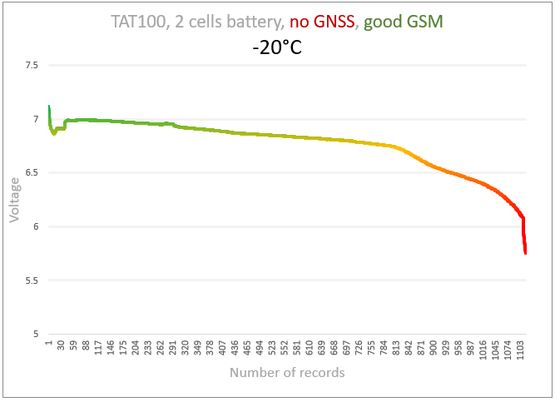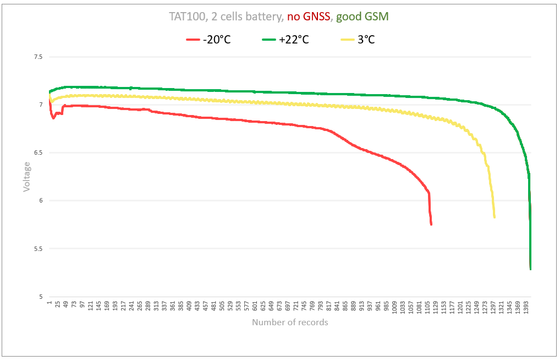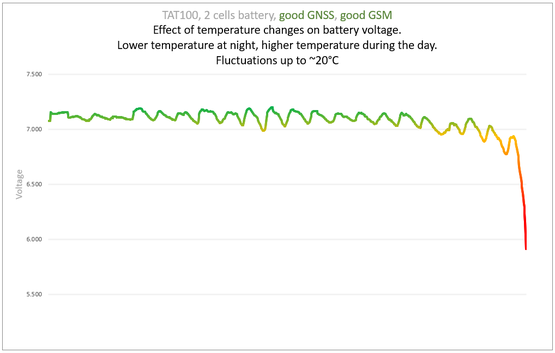Difference between revisions of "TAT100 Battery Discharge Characteristics"
| Line 10: | Line 10: | ||
<br /><br /><br /><br /><br /> | <br /><br /><br /><br /><br /> | ||
| − | [[File:TAT100_no_gnss_good_gsm_-20_C.png|555x555px|left]]<br /><br /><br /><br /><br /><br /><br /><br /> | + | [[File:TAT100_no_gnss_good_gsm_-20_C.png|555x555px|left]]<br /><br /><br /><br /><br /><br /><br /><br /><br /> |
| − | [[File:TAT100_no_gnss_good_gsm_all_C.png|560x560px|right]]<br /><br /><br /><br /><br /><br /><br /><br /><br /><br /><br /><br /> | + | [[File:TAT100_no_gnss_good_gsm_all_C.png|560x560px|right]]<br /><br /><br /><br /><br /><br /><br /><br /><br /><br /><br /><br /> <br /><br /> <br /><br /><br /> |
Just like how the weather affects our mood, temperature also changes battery voltage. When it's cold, the voltage goes down, and when it's warm, the voltage goes up. This is something to remember when using batteries in different situations. | Just like how the weather affects our mood, temperature also changes battery voltage. When it's cold, the voltage goes down, and when it's warm, the voltage goes up. This is something to remember when using batteries in different situations. | ||
Revision as of 06:39, 17 August 2023
Main Page > Autonomous Trackers > TAT100 > TAT100 Manual > TAT100 Battery Discharge CharacteristicsTAT100 Battery Discharge Characteristics
In order to help our clients estimate the approximate battery life of their TAT1XY Trackers, we have compiled a comprehensive collection of battery discharge curves under various conditions. This wiki page serves as a valuable resource for understanding how different factors can affect the longevity of the tracker's battery, allowing users to make informed decisions and optimize their device's performance. Battery life is a crucial aspect of any tracking device, and accurately predicting its duration is essential for planning deployments, managing operations, and ensuring uninterrupted tracking capabilities. By providing battery discharge curves, we empower our clients to evaluate the performance of the TAT1XY Trackers in different scenarios and tailor their usage accordingly. Please note that while these battery discharge curves provide estimations, actual battery life may vary based on individual usage patterns, environmental factors, and other variables. Therefore, it is always recommended to conduct real-world tests to validate the expected battery performance.
The charts below show how the TAT100 battery discharges in different environments. All provided information is based on real field tests.
Just like how the weather affects our mood, temperature also changes battery voltage. When it's cold, the voltage goes down, and when it's warm, the voltage goes up. This is something to remember when using batteries in different situations.
Here is an example of the device being used outdoors, with lower temperatures at night and higher temperatures during the day.
